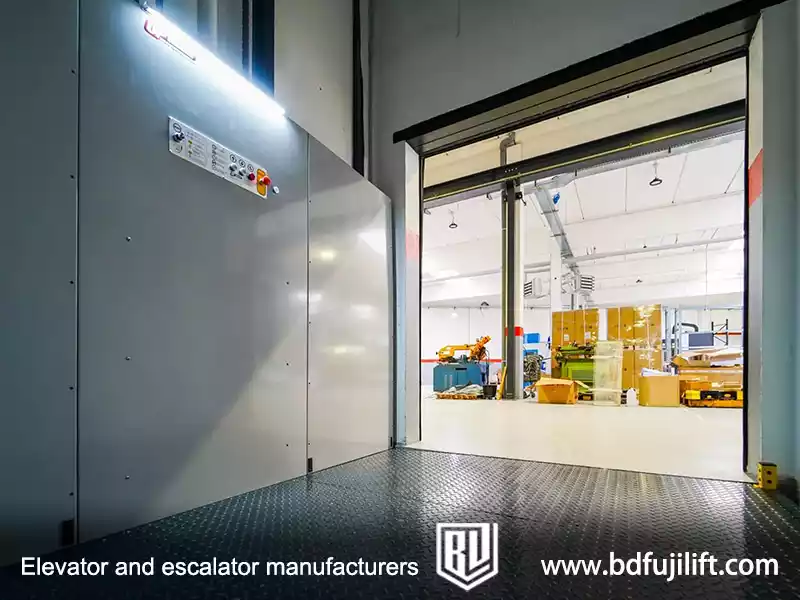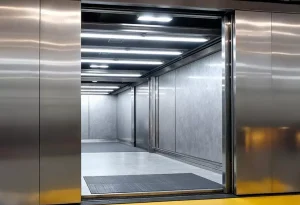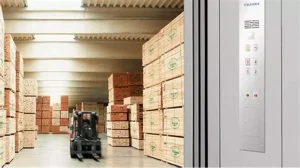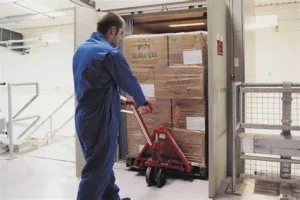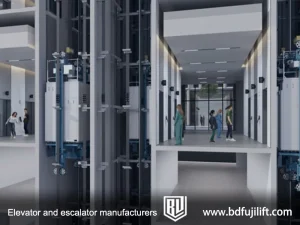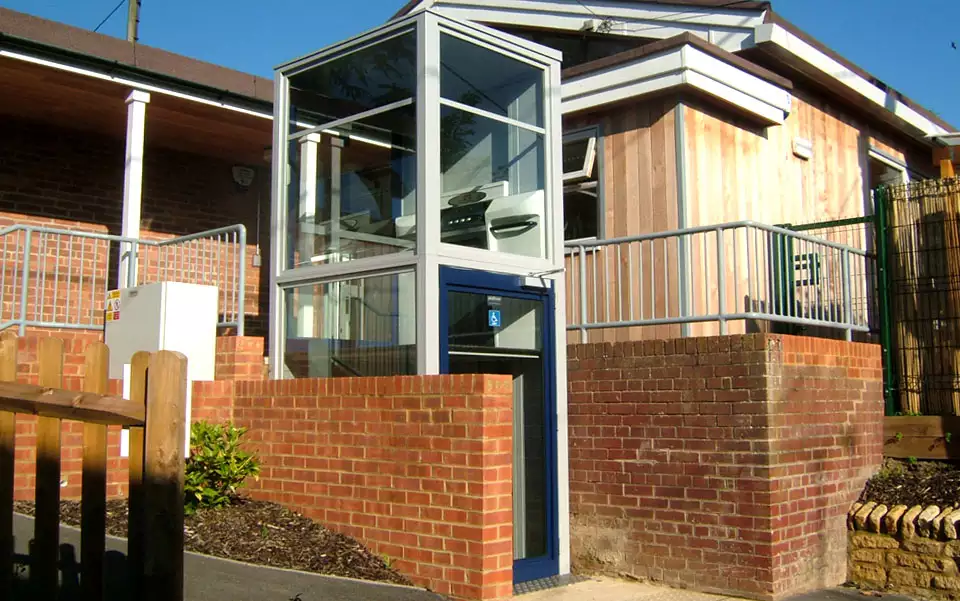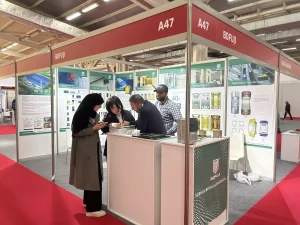There is no single price for freight elevators. Each project is different, and the final cost depends on many factors. These include the size of the elevator, how much weight it carries, how many stops it has, and where it’s installed.
Since cost matters in most building projects, it’s helpful to understand what affects the price of a freight elevator.
This guide will walk you through the main things that change the cost, so you can plan your project better and avoid extra spending.
Factors That Affect Freight Elevator Cost
The cost of a freight elevator depends on many things. These include the type of machine, the materials used, the size and design of the elevator, how many you order, and the extra work needed after installation.
Type of Elevator and Equipment
The kind of freight elevator you choose has a big impact on cost. Hydraulic elevators are often cheaper than traction elevators, but they may not be as fast or energy-efficient. Outdoor freight elevators cost more than indoor ones because they need special protection from weather.
Also, larger and more powerful elevators cost more to build, install, and maintain. If the elevator needs to carry heavy loads or go up many floors, it will usually cost more.
Design and Size
Bigger elevators need more materials and stronger support structures, which means higher costs. The design also matters. Simple, standard cabins are cheaper to make. If you want glass walls, special finishes, or extra doors, the price will go up.
Construction and Setup
Before the elevator can be used, builders need to prepare the space. This may include digging a pit, building a shaft, or cutting through floors. These construction steps add to the total cost.
Some elevators don’t need a machine room or pit. These “pitless” or “machine-room-less” models can save on setup costs, but the elevator itself may cost more.
Order Volume
If you’re ordering more than one freight elevator for the same building or project, the cost per unit may be lower. That’s because the design and setup work only need to be done once, which saves time and money.
Customization and Extra Features
Some freight elevators need extra options based on how they will be used. These can include fireproof walls, stainless steel panels, or special door types. You might also choose to add windows, safety sensors, or special lighting.
These custom features help the elevator work better or look better, but they also add to the total cost. The more custom work you ask for, the higher the price will be.
Average Equipment Cost of Freight Elevators
When considering the cost of a freight elevator, the price can vary depending on size, capacity, and features.
To give you a better idea, the table below provides a rough estimate of the typical costs for different types of freight elevators.
Freight Elevator Cost Breakdown
| Type of Elevator | Capacity | Average Cost Range | Common Use |
|---|---|---|---|
| Small Commercial Elevators | 500–1000 kg | $20,000 – $40,000 | Small commercial spaces, retail |
| Medium Industrial Elevators | 1500–3000 kg | $40,000 – $80,000 | Warehouses, factories |
| Heavy-Duty Freight Elevators | 4000–5000+ kg | $80,000 – $150,000+ | Industrial, large-scale facilities |
Freight Elevator Installation Cost
Construction and Site Preparation
The first step in installing a freight elevator is preparing the site. This includes building the shaft, digging the pit, and making sure the structure can support the elevator system. The more complex the building structure, the higher the installation cost will be. For example, older buildings may need more structural work, which can raise the cost. The cost of preparing the site can vary depending on how much work is needed, but it generally falls between $10,000 to $30,000 for basic setups.
Labor and Local Permit Fees
Labor costs can make up a large part of the installation expenses. The cost of labor depends on the location and the complexity of the installation. For example, installation in a busy city with high labor rates will cost more than in smaller towns. Additionally, you will need local permits to install the elevator, which could cost anywhere from $500 to $5,000 depending on the area and the type of elevator being installed. These fees cover inspections, safety checks, and other regulatory requirements.
Equipment Cost Estimate
On average, the equipment cost of a freight elevator can range from:
- Small Commercial Elevators (500–1000 kg): $15,000 – $25,000
- Mid-size Industrial Elevators (1500–3000 kg): $30,000 – $50,000
- Heavy-Duty Freight Elevators (4000–5000+ kg): $60,000 – $100,000+
These estimates cover the cost of the elevator system, including the motor, control systems, cables, and other essential components. The final price may vary depending on the type of elevator system chosen (e.g., hydraulic, traction, or machine-room-less) and any special features or upgrades selected.
Operating and Maintenance Costs
Routine Maintenance and Service Plans
Once the freight elevator is installed, it will need ongoing maintenance. Most elevator systems must regular servicing to ensure smooth operation. This includes tasks such as lubricating moving parts, inspecting the cables, and checking for wear and tear. Maintenance can cost between $1,000 and $5,000 per year, depending on the elevator type and how often it is used. Many companies offer maintenance service plans that provide regular check-ups for a fixed cost.
Unexpected Repair Costs
Even with regular maintenance, unforeseen repairs can occur. These can include motor failure, control system issues, or door malfunctions. While rare, unexpected repairs can cost anywhere from a few hundred dollars to several thousand, depending on the severity of the issue. It’s important to set aside a budget for these unexpected repairs to avoid delays in the elevator’s operation.
Special Scenarios and Cost Variations
Outdoor Freight Elevator Cost
Outdoor freight elevators are built to withstand weather conditions like rain, snow, and extreme heat. As a result, they often must more durable materials and weatherproofing features, which increase the initial cost. Depending on the elevator’s size and features, installation costs for outdoor freight elevators can be 10-20% higher than indoor models.
Pitless Freight Elevator Options
Pitless freight elevators don’t must a pit to be dug into the ground, which can save on installation costs. But, the elevator itself may be more expensive, and the system’s design may must more advanced technology. Pitless elevators are ideal for situations where digging a pit is not possible, but they are typically 10-15% more expensive than standard models.
Custom or OEM Freight Elevators
For buildings with unique requirements, custom or OEM freight elevators may be necessary. These elevators are designed to meet specific needs, such as extra-large capacity, faster speeds, or special finishes. Custom elevators can add significant costs, often raising the price by 30-50% compared to standard models. The price will depend on the complexity of the custom features and the materials chosen.
Cost Differences of Freight Elevators by Region
The cost of a freight elevator can be very different depending on where it is bought. Manufacturing costs, shipping, and local factors all play a big role in the price.
Cost Comparison in the U.S., China, and India
Here’s a quick comparison of freight elevator costs in the U.S., China, and India, based on factors like manufacturing costs, shipping, and labor.
| Region | Manufacturing Cost | Shipping Cost | Total Cost Range | Key Factors |
|---|---|---|---|---|
| United States | Higher due to labor costs and advanced technology | $5,000 – $15,000 | $20,000 – $150,000 | Higher labor costs, advanced materials, strict regulations |
| China | Lower due to cheaper labor and bulk production | $3,000 – $8,000 | $15,000 – $80,000 | Lower labor costs, economies of scale, cheaper materials |
| India | Affordable, but varies by quality | $3,000 – $10,000 | $18,000 – $100,000 | Low labor costs, local manufacturing advantages |
Manufacturing Costs
-
United States: Manufacturing costs are higher in the U.S. because of higher labor costs and the use of better materials. The quality control standards are also strict, which adds to the cost.
-
China: Manufacturing in China is cheaper because of lower labor costs and more efficient production. But, the materials used might be less expensive than those in the U.S.
-
India: India has affordable manufacturing costs with low labor and good local materials. But, the technology used in the production process might not be as advanced as in the U.S.
Shipping Costs
Shipping is an important part of the price. Here’s how shipping costs compare:
-
United States: Shipping to the U.S. is usually more expensive because of the longer distance and higher logistics costs. Shipping can add $5,000 to $15,000 to the total price.
-
China: Shipping in China is cheaper, and shipping costs for freight elevators typically range from $3,000 to $8,000.
-
India: Shipping from India is also cheaper, but international shipping can cost anywhere from $3,000 to $10,000, depending on the method and destination.
How to Estimate the Total Project Budget
Estimating the total project budget for a freight elevator there are many factors to consider, including elevator costs, installation fees, and ongoing maintenance. Being strategic about where you divide your budget can help keep the project cost-effective. The following tips will help you with both cost estimation .
What Should Be Included in the Freight Elevator Quote
When you request a quote for a freight elevator, make sure the supplier includes all the necessary elements in their pricing. A comprehensive quote should cover:
- Elevator System Cost: The price of the elevator itself, including motor, controls, and other components. The total cost depends on the type of elevator and its capacity.
- Installation Fees: This includes costs for site preparation, labor, and special installation requirements (such as reinforced structures or electrical work).
- Shipping Costs: If the elevator is imported, be sure the quote includes shipping fees. These costs can vary depending on the distance and shipping method used.
- Maintenance Plans: Some companies offer service contracts for regular inspections and maintenance. Including this in the initial quote can help manage long-term costs.
- Customization: If you need a custom-designed elevator, be sure to ask for details on the extra costs for features like increased speed, larger capacity, or special finishes.
Tips for Getting an Accurate Cost Estimate
Getting an accurate cost estimate for a freight elevator project requires careful planning. Here are some helpful tips to ensure you get the most reliable estimate:
- Get Many Quotes: Ask at least three different companies for quotes. This will help you compare prices and services. Be sure the quotes are based on the same specifications.
- Provide Detailed Information: The more details you provide, the more accurate your quote will be. Be sure to mention the elevator capacity, site conditions, and any special requirements.
- Ask About Extra Costs: Be sure to inquire about any hidden costs, such as permits, site modifications, or extra safety features that might not be included in the basic quote.
- Consider Future Costs: Some aspects of the project may have long-term implications. For example, opting for more durable materials may cost more upfront, but can reduce maintenance expenses in the future.
How to Reduce Freight Elevator Costs
When buying a freight elevator, there are several ways to reduce costs without sacrificing quality.
1.Choose Standard Sizes Whenever Possible
One of the easiest ways to lower freight elevator costs is to choose a standard size instead of a custom design. Custom elevators are more expensive because they must special parts and extra manufacturing time. By selecting a standard size, you can reduce both the cost of the elevator and the time it takes to produce it.
2.Use Local Installers Familiar with Regulations
Local installers can often work faster and more efficiently, as they already know the area’s rules and have the right tools and experience. They may also have better relationships with suppliers, which can result in lower costs for materials and labor.
3.Combine Supply and Installation Services from the Same Vendor
To cut down on costs, it’s a good idea to buy the elevator and have it installed by the same supplier. Many suppliers offer discounts when you combine both services, and working with one vendor can simplify the process. You won’t have to deal with many companies and can avoid extra shipping or coordination fees.
Recommended reading:
Freight elevator vs passenger elevator: which one should you choose?
Can a Freight Elevator Be Used for Passengers?
Service vs. Freight Elevator: What’s the Difference?
Freight Elevator Operating Cost FAQ
What is the monthly operating cost of a freight elevator?
The monthly operating cost of a freight elevator varies based on factors like energy use, maintenance, and frequency of operation. On average, expect to pay between $100 and $500 per month for maintenance, energy, and minor repairs.
Are pitless freight elevators more affordable?
Pitless freight elevators (without a pit or shaft) are generally more affordable because they require less construction and fewer modifications. They also save on installation costs, as less digging and foundation work are needed. However, savings depend on the specific building design and needs.


